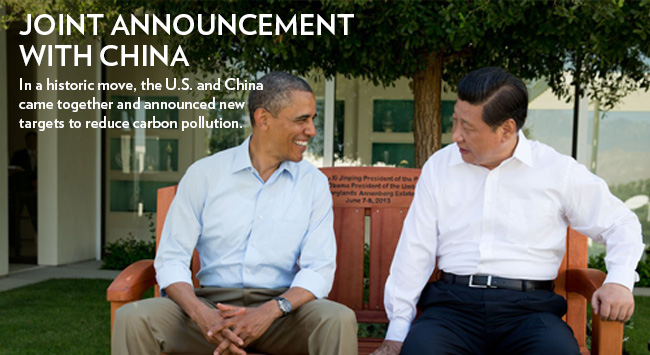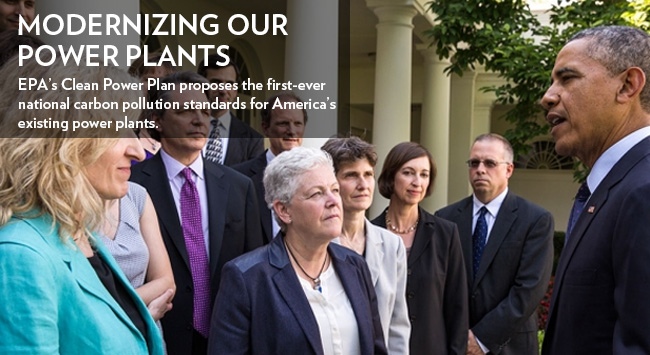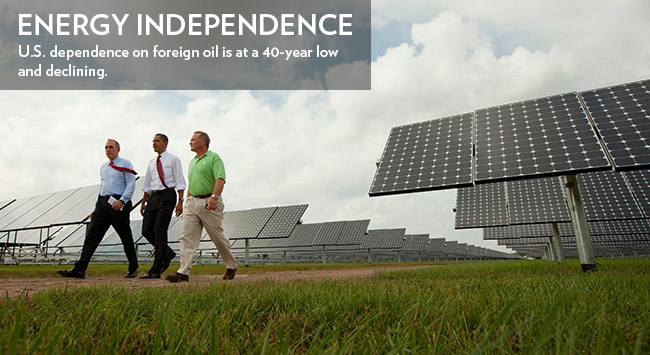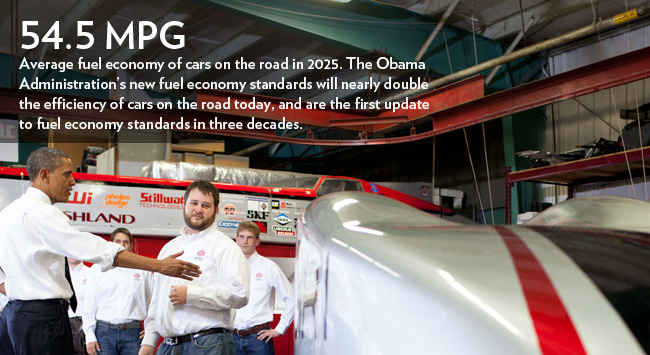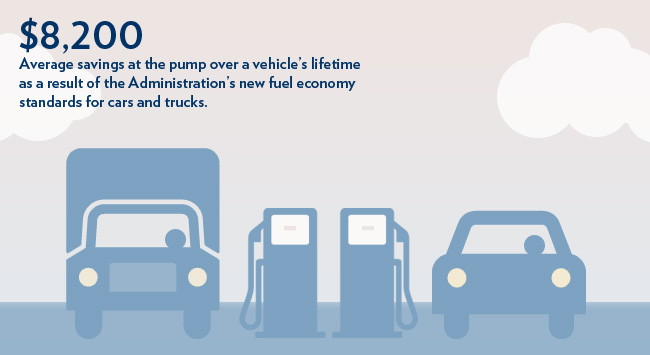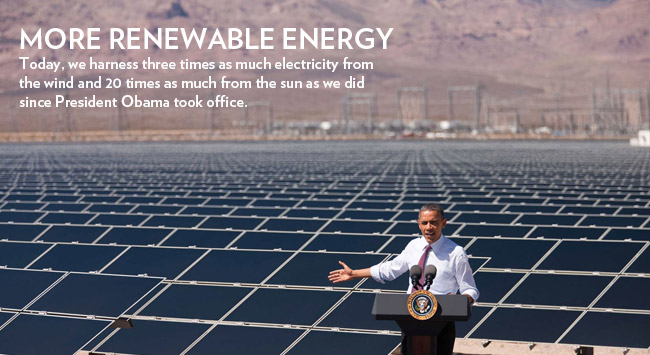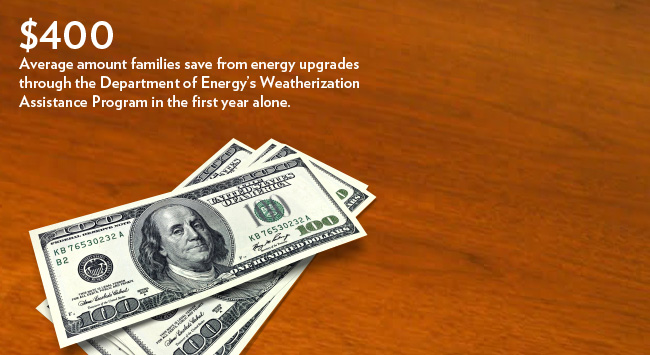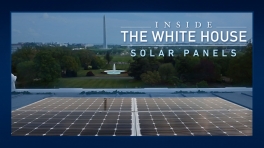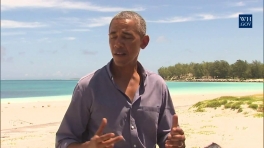Energy and Environment Latest News
Mass Transit as a Platform for Science Learning
Posted by on February 27, 2015 at 12:32 PM EDT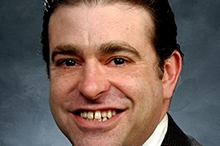
David Lustick is being honored as a Climate Education and Literacy Champion of Change.
A significant body of research substantiates the drivers and impacts of human-induced climate change. While schools help young people understand basic science, how do adults learn about new and relevant scientific concepts (like climate change) after graduation? Many rely on news sources for general information, but few seek in-depth sources for science understanding. How can the general public learn about important scientific discoveries? How can they become knowledgeable about emerging scientific issues? These are the questions that drive both Cool Science and Sciencetogo.org, two collaborative projects that use public mass transit as a milieu for informal science learning.
Cool Science uses children’s artwork to engage the local community with climate science. The project is a collaboration between University of Massachusetts Lowell, University of Massachusetts Boston, Anastas Advertising, and the Lowell Regional Transit Authority. Each year, we hold an art competition in the Commonwealth of Massachusetts, where students from grades K-12 are encouraged to express their ideas and questions about climate change through the visual arts. The best submitted artwork is then displayed in and on local buses. As the buses travel their routes, the community can see, consider, and reflect upon young people’s ideas about climate change. With 5,000 riders per day and 500 participating artists annually, Cool Science engages both formal and informal audiences. Initially supported through a University of Massachusetts’ Creative Economy Grant, Cool Science now also includes corporate sponsors, such as United Parcel Service. Our goal is to continue to foster such partnerships and bring Cool Science to other communities across the Commonwealth and the nation.
ScienceToGo.org also uses mass transit as its platform for learning about climate change. This partnership features a 12-month multi-media learning campaign staring “Ozzie the Ostrich,” who appears on posters and placards placed on Massachusetts Bay Transit Authority (MBTA) train cars and station platforms. Riders follow Ozzie on his story of awakening to the reality, relevance, and current solutions to the climate change challenge. This campaign brings the power of an effective science exhibit to the daily routines of the commuting public. With a website and social media hosted by the Museum of Science (MOS) and ad space donated by the MBTA, this National Science Foundation-funded project harnesses the power of marketing to engage 400,000 daily riders with free-choice learning options about climate change.
Both Cool Science and ScienceToGo.org represent innovative efforts to transform the daily routine of a person’s life into entertaining science learning opportunities. A big part of these projects’ success can be attributed to our cross-disciplinary approach. A team of partners from a number of universities and institutions helps to build our work through ScienceToGo.org and fosters effective science communication and engagement. Together, we build relationships between the private, public, and non-profit sectors for the common good of our respective communities.
David Lustick is a National Board certified teacher and an Associate Professor of Science & Math Education at the University of Massachusetts Lowell’s Graduate School of Education.
Learn more about Energy and Environment"How Low Can We Go?" A Fun Challenge for U.S. Schools to Reduce Energy Consumption
Posted by on February 27, 2015 at 12:28 PM EDT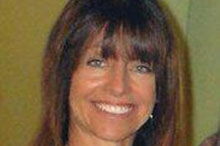
Linda Gancitano is being honored as a Climate Education and Literacy Champion of Change.
Back in 2008, I was watching the Oprah Winfrey Show as she showed snippets of the documentary, An Inconvenient Truth. My eyes just happened to catch a scene that would change my world: the swimming polar bear who couldn’t reach another iceberg because the sea ice was melting. As the polar bear drowned, I found myself crying and thinking, this is wrong. This shouldn’t be happening. That image stayed in my mind for a long time.
In November 2008, I formed a Green Team at Driftwood Middle School (DMS) in Hollywood, Florida. Our team consisted of three teachers and three student leaders. The team has since tripled in size, and the school’s culture is visibly environmentally friendly. In fact, that was a primary objective of our first initiative: we created a visual board so that the entire school could track monthly energy usage.
Next, we raised awareness of energy conservation via the "How Low Can We Go?" Challenge—an initiative that later became partners with the Miami Heat during NBA’s Green Week to impact 64 Broward County Public Schools, the sixth-largest district in the country. If any partner could raise awareness of reducing CO2 emissions, it was the Miami Heat, voted one of the top "green" sports teams in the country.
Our first Energy Team, better known as the "DMS Chillers," walked from room to room after school looking for classrooms with lights left on. The students would leave a painted paw print (in memory of the polar bear) on the door saying, “You’ve been Chilled!” as a reminder to teachers to turn off lights when they left for the day. Our teachers and custodial staff started to get really involved in conserving energy. No teacher wanted a big paw print on their door on Monday morning!
Next up, the Green Team took to creating an Energy Audit Team that ventured into classrooms and made suggestions to the teachers and other students on how to conserve energy. Last year's new initiatives included the "Are You S.E.K.C.?" (Stopping Excessive Kilowatt Consumption) and the "Are You a H.E.R.O.?" (Helpful Energy Resource Officer) campaigns. The students hand out green H.E.R.O. bracelets when they catch a teacher or another student conserving energy. Since the Green Team was formed in 2008, the school has seen a 23% decrease in emissions. Our greatest challenge in decreasing energy even further is technology, an antiquated cooling system that needs to be replaced. DMS continues to expand our alternative energy education by including future projects, such as solar power and a wind turbine, to the curriculum. The tradition of the DMS Chillers lives on, impacting our 1,600 students and faculty.
So, How Low Can You Go?
Our partnership with the Miami Heat initially has enticed schools to rise to the challenge of reducing their environmental footprint. Not only by raising awareness of the effects of CO2 emissions but also educating the facilities on potential financial savings through responsible energy consumption. Curtailing wasteful spending on unnecessary energy consumption has the added benefit of allowing schools to allocate those saved dollars to under-funded programs. In the one-month pilot program in February 2014, we saved over $34,000 in energy costs and reached over 90,000 faculty and students. This school year, with 87 schools registered for the challenge, the impact will reach over 100,000. Future possibilities include South Florida's Tri-County Area and the whole country!
Won't you join us?
Linda Gancitano is a Physical Education and Wellness educator at Driftwood Middle School in Broward County, Florida.
Learn more about Energy and EnvironmentA Generation of Hope
Posted by on February 27, 2015 at 12:24 PM EDT
Gina Fiorile is being honored as a Climate Education and Literacy Champion of Change.
It is an honor to be selected as a White House Champion of Change because I am representing countless students and youth leaders who work tirelessly to combat climate change.
My generation is one of subtle controversy. Recent advances in technology have been openly accepted by youth, and because of this, we have become the most social generation in history. Our interconnectedness may come with a few negative effects, but there are also significant positive outcomes that result from our social nature. We are more mindful, more aware, and have more opportunities to support each other.
My passion for climate education began in high school, where I became involved in the annual Adirondack Youth Climate Summit. This two-day conference is held at a local science museum where students from across the Northeast gather to learn about climate change and create climate action plans to implement in their schools. Not only do students have the opportunity to learn from renowned climate scientists, but they are also able to build a community around their environmental passions and connect socially. This summit changed my life in that it inspired me to dedicate my career to the cause. It also opened the eyes of thousands of students. It is has been adopted as a model for similar programs across the country as part of the White House’s Climate Education and Literacy Initiative, and has spread internationally. My peers and I had the opportunity to be featured in a PBS documentary titled “The Resilient Ones,” which followed us throughout the planning process. After my experience at the Summit, I was inspired to take on a number of projects including waste reduction, the building of a greenhouse and school garden, the local farm-to-school movement, and communications with the community. My work and motivation is an example of the outcomes of successful climate education.
I do not believe it is a coincidence that the generation I am a part of has arrived at the same time in history as human-induced climate change. We now have the tools we need to communicate the effects of climate change and fully understand the science behind it. We have the capacity to build a network around climate science and climate education in the battle for sustainability.
It is time we take advantage of the opportunities we have created for ourselves to fight this battle with full force. An attitude of realism as opposed to negativity is what will carry us through. It is important that we look to future generations as a source of hope when we feel discouraged by setbacks on the road to sustainability. Our greatest defense in this fight is an increase in climate literacy, so that future leaders are better prepared to catalyze positive change.
Climate change is one of the greatest challenges we have faced because it is an issue that will impact every single human being and living thing now, and for millions of years to come. If this is the case, how can we not do everything in our power to combat it? In accepting our responsibility to educate future generations by utilizing all of the resources we have, the next generation will be more capable to combat this challenge. They are a source of hope during this period of ecological and social change.
Gina Fiorile is a freshman Environmental Studies Major in the Rubenstein School of the Environment and Natural Resources at the University of Vermont.
Learn more about Energy and Environment7 out of 10 Doctors: Climate Change Is Already Harming Patients’ Health
Posted by on February 26, 2015 at 3:08 PM EDTTwo-thirds of the American people believe climate change is a serious problem, and that the government should take action to address it. It shouldn’t be surprising that our nation’s doctors do, too — nearly 90 percent of them.
Today, the American Thoracic Society (ATS) will hit the halls of Congress to educate our representatives about a new survey of more than 900 ATS members, which found the majority of doctors believe climate change is already negatively affecting the health of their patients. In fact, 77 percent of respondents reported that increases in air pollution due to climate change are worsening the severity of illnesses in their patients, and they expect these health impacts will further increase in the future.
ATS members also indicated that their patients are experiencing other climate-related health problems — including injuries due to severe weather, allergic reactions, and heat-related impacts. These findings are in line with the results of a survey of the National Medical Association’s members last year, which also found that the sick, elderly, and people living below the poverty line will be disproportionately impacted by climate change.
Learn more about Energy and EnvironmentClean Energy RD&D Investments Make Us Stronger
Posted by on February 25, 2015 at 6:06 PM EDTThe American Energy Innovation Council (AEIC), a bipartisan collection of business leaders focused on creating economic growth through public and private investment in new energy technology, recently issued a report calling for a boost in investment in energy research, development, and deployment (RD&D). The report reinforces the fact that investments are critical to America’s ability “to sustain its international competitiveness, reinforce its economic security and resiliency, and protect the environment.” The report concludes that “public investments in energy RD&D are crucial.” We couldn’t agree more.
The 2016 Budget vigorously advances the President’s commitment to strengthen the middle class and make America a magnet for jobs in the 21st century global economy by investing in manufacturing and innovation. The Budget supports clean energy technology programs that position America as a global clean energy leader with a strong and modern energy infrastructure. Specifically, the Budget proposes approximately $7.4 billion for clean energy RD&D across the Federal government, a nearly $1 billion increase over the current enacted level.
Clean energy RD&D investments – and research and development investments more generally – help illustrate an important principle reflected in the President’s proposal: A Budget that locks in sequestration going forward would be bad for our security and bad for our growth.
Learn more about Energy and EnvironmentBudgeting for Climate Preparedness and Resilience
Posted by on February 20, 2015 at 2:55 PM EDTThe National Climate Assessment was clear: The intensity of storms and rates of rainfall associated with hurricanes are projected to worsen with the warming climate. For the folks who live on the frontlines of the impacts of climate change– like the communities in Southeast Florida – the ruthless reality of extreme weather events are all too familiar. For them, and for countless communities from coast-to-coast, the economic case for investment in climate preparedness and resilience is also much too familiar. That is why these communities are taking action; and that is why resilience is becoming a bigger part of the public discourse – like yesterday’s Urban Institute event with Shaun Donovan, Director of the Office of Management and Budget, Judith Rodin, President of The Rockefeller Foundation and Sarah Rosen Wartell, President of The Urban Institute. The discussion focused on building resilient communities, the role of philanthropy in partnering with public leaders, and the impact of disasters on vulnerable populations.
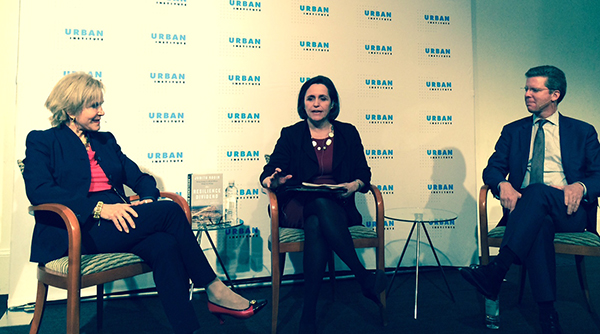
Director Donovan noted that the President’s 2016 Budget provides the necessary tools, technical assistance, and on-the-ground partnership to support investment in climate preparedness and resilience.
The motivation to act now is simple: Why wait until after extreme weather hits?
When it came to their children’s health, Southeast Floridians decided they would not wait. In 2001, the community decided to invest in a robust retrofit of the Miami Children’s Hospital – they decided to build a glass fiber reinforced concrete “cocoon” around the hospital. That investment paid off: When Hurricanes Frances and Jeanne hit, the Children’s Hospital didn’t miss a beat. In fact, it provided a safe place to over 60 children who lived at home, were evacuated, and needed access to ventilators or other electrically-powered medical equipment. The theory proved right: The community took action, and, in the face of extreme weather, the Children’s Hospital endured.
Southeast Florida had good partners. The $11.3 million project was supported by a $5 million grant from the Federal Emergency Management Agency (FEMA). And studies – concluding that Americans save $3-$4 for every dollar invested in pre-disaster mitigation – show that these types of Federal grants are regularly a good investment, not just in Southeast Florida. That is why the President’s Budget scales up investment in programs like the FEMA Pre-disaster Mitigation Grant Program, proposing $200 million to help protect people and structures. This is an increase of $175 million over current funding levels.
The goal for investment in climate preparedness and resilience is clear: to proactively reduce the risks communities and ecosystems face, rather than waiting until after disaster strikes. These forward-thinking investments will not only save lives, but will save communities and taxpayers the costs associated with recovering from the next weather-related emergency for which they were not prepared; they include:
- Flood Resilience. The Budget includes $400 million for National Flood Insurance Program Risk Mapping efforts, an increase of $184 million over current funding levels to help communities and businesses understand what areas pose flood risks. The Budget also includes $200 million for the United States Department of Agriculture (USDA) to emphasize watershedscale planning and land treatment efforts and aid communities in planning and implementing mitigation and adaptation projects for extreme weather events.
- Drought Resilience. The Budget strongly supports USDA in its efforts to integrate climate considerations into existing programs and to use programs to drive resilience. For example, through its regional Climate Hubs, the Department will provide information and guidance to farmers, ranchers, and forest landowners on the latest technologies and risk management strategies to help them implement climate-smart tactics. This effort is complemented by $89 million for the Department of Interior (DOI) WaterSMART program, which promotes water conservation initiatives and technological breakthroughs.
- Wildland Fire Resilience. The Administration is committed to ensuring that adequate funds are available to fight wildland fires, protect communities and human lives, and implement appropriate land management activities to improve the resiliency of the Nation’s forests and rangelands. To accomplish this, the Budget proposes to establish a new funding framework for wildland fire suppression, similar to how other natural disasters are currently funded.
- On-the-Ground Partnership with Local Communities. The Budget provides $4 million to support a Resilience Corps pilot program at the Corporation for National and Community Service. This pilot program will support roughly 200 AmeriCorps members to assist communities in planning for and addressing the impacts of climate change. The Budget also includes $2 million for the National Oceanic and Atmospheric Administration (NOAA) to train the Resilience Corps members. In addition to standing up a new Resilience Corps, the Budget also scales up on-the-ground programs that are already at work—such as the Army Corps of Engineers’ Silver Jackets—by providing $31 million for the Corps of Engineers to provide local communities with technical and planning assistance regarding the development and implementation of nonstructural approaches to manage and reduce flood risk.
The exposure of the Federal budget to climate risks provides yet another call to action for policymakers. Over the last decade, the Federal Government has incurred over $300 billion in direct costs due to extreme weather and fire alone, including domestic disaster response and relief ($176 billion), flood insurance ($24 billion), crop insurance ($61 billion), and wildland fire management ($34 billion). While it is not possible to identify the portion of these costs incurred as a result of climate change, costs for each of these Federal programs have been increasing and can be expected to continue to increase as the impacts of climate change intensify.
Communities like Southeast Florida – a White House Climate Action Champion – are modeling how we should respond to one of the most significant long-term challenges that our country and our planet faces. The President’s Budget provides the necessary tools, technical assistance, and on-the-ground partnership to support communities like theirs, and the countless others from coast-to-coast that are dealing with the impacts of climate change in the best way: by taking action.
Ali Zaidi is the Associate Director for Natural Resources, Energy and Science at the Office of Management and Budget.
Learn more about Energy and Environment
- &lsaquo previous
- …
- 13
- 14
- 15
- 16
- 17
- 18
- 19
- 20
- 21
- …
- next &rsaquo
White House Blogs
- The White House Blog
- Middle Class Task Force
- Council of Economic Advisers
- Council on Environmental Quality
- Council on Women and Girls
- Office of Intergovernmental Affairs
- Office of Management and Budget
- Office of Public Engagement
- Office of Science & Tech Policy
- Office of Urban Affairs
- Open Government
- Faith and Neighborhood Partnerships
- Social Innovation and Civic Participation
- US Trade Representative
- Office National Drug Control Policy
